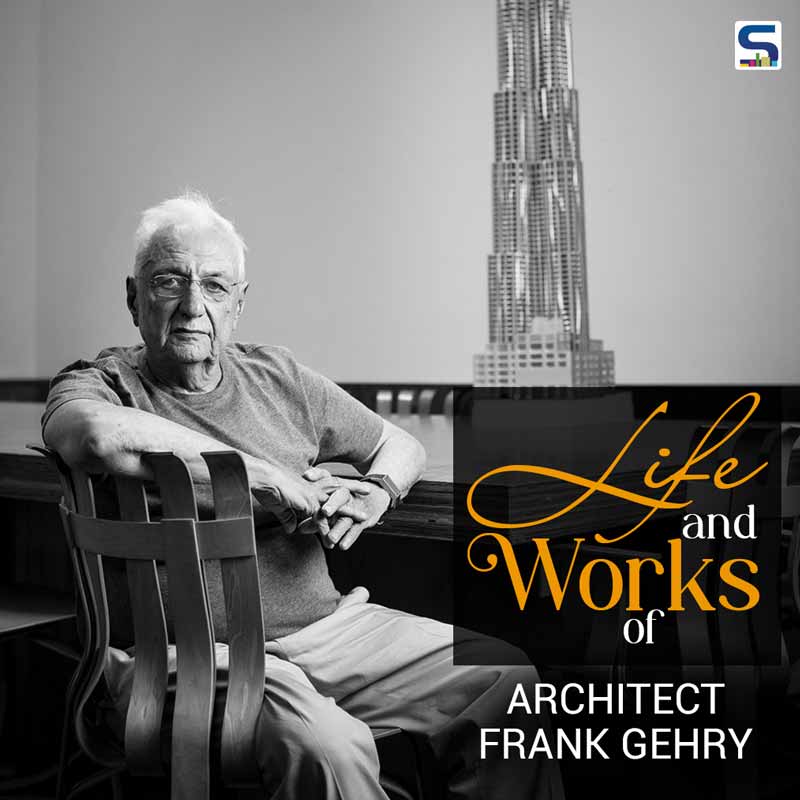
The living legend Canadian-American architect Frank Gehry turns 91 today. SURFACES REPORTER (SR) team wishes him a great and healthy life ahead and takes this time to showcase the life and noteworthy works of the eminent architect who destabilized the conventional notions related to construction materials and architectural forms and won critical acclaim for his ‘audacious’ approach to design.
Also Read: Legendary Architect B. V. Doshi
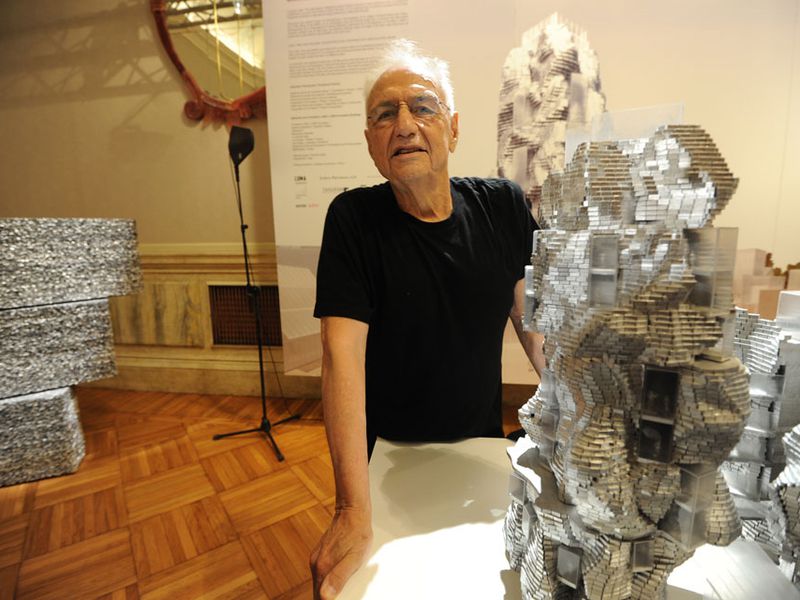 Courtesy: www.smithsonianmag
Courtesy: www.smithsonianmag
Born on February 28, 1929, in Toronto, Ontario, Canada, Gehry immigrated to Los Angeles in 1947 where he studied architecture at the University of Southern California and city planning at Harvard University. He worked with many architectural firms before establishing his own company Frank O. Gehry & Associates in 1962, which he followed with its successor Gehry Partners in 2002. In contrast to the rigid and formulaic approach of Modernist architecture, he experimented with uncommon techniques and expressive devices to find his distinctive vocabulary. He started with renovations to his home in Santa Monica, California, and continued his experimentation steak in two famous corrugated cardboard furniture project lines, namely Easy Edges and Experimental Edges. Gehry’s approach to design led him to be associated with both the deconstructivist and postmodernism movement in architecture.
Accolades and Recognition
A familiar presence in the major museums, Gehry’s designs and sculptures have been exhibited at Voyage of Creation, Foundation Louis Vuitton, Paris (2014); Centre Pompidou Paris (2014); Los Angeles County Museum of Art (2015); and Architect Frank Gehry: I Have an Idea, 21_21 Design Sight, Tokyo (2015). He is the recipient of high honours such as the Pritzker Architecture Prize (1989), US National Medal of Arts, Gold Medal, American Institute of Architects, and US Presidential Medal of Freedom in 2016.
Important Works
Guggenheim Museum Bilbao, Spain; Walt Disney Concert Hall, Los Angeles; Dancing House, Prague; Olympic Fish Pavilion, Barcelona; and Museum of Pop Culture, Seattle, Washington are some of Gehry’s career highlights, among others. While they have received mixed reactions for their innovative designs, they are essentially an attempt at redefining architecture’s limits and possibilities.
Guggenheim Museum Bilbao, Spain
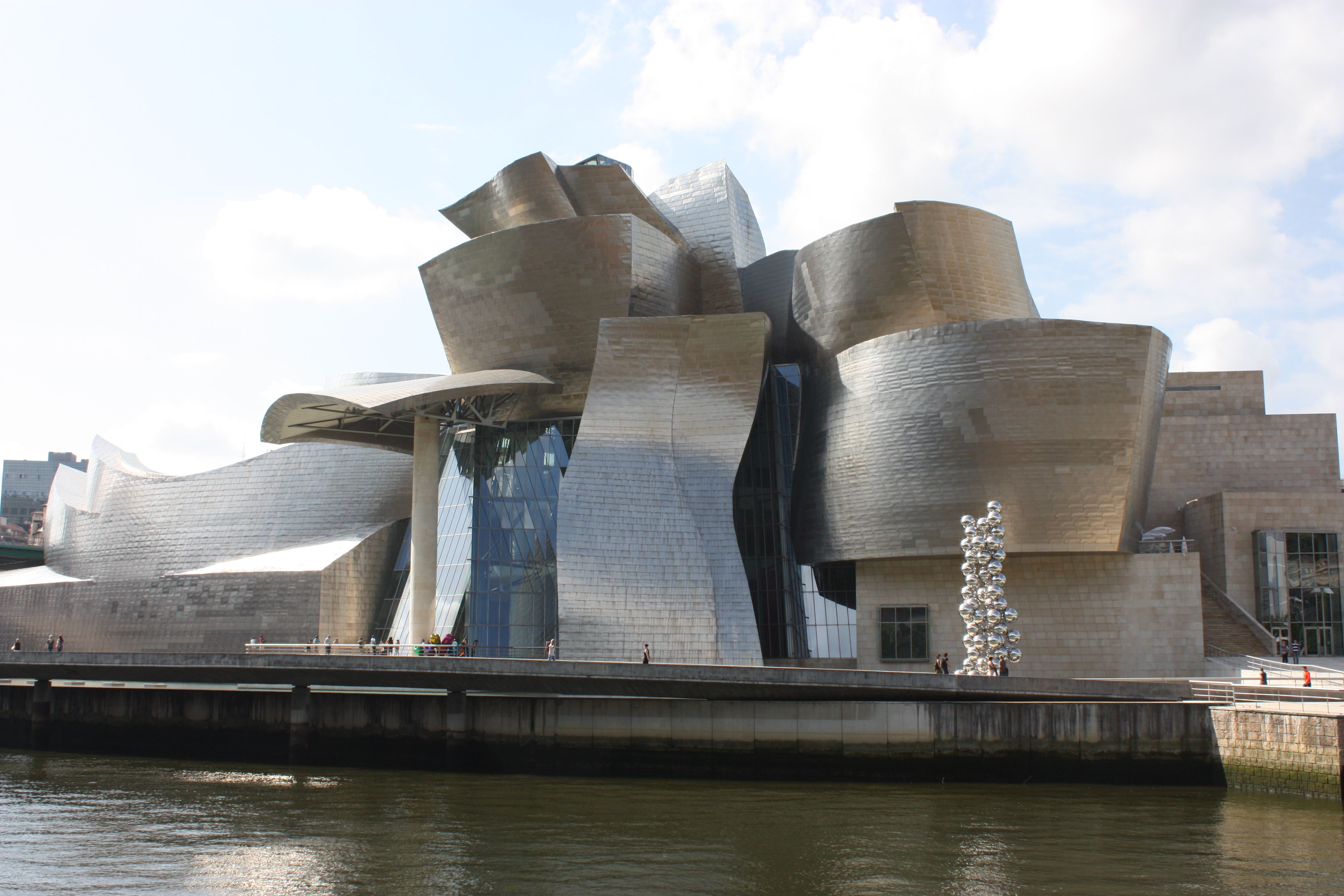 Courtesy: ArchDaily
Courtesy: ArchDaily
The Guggenheim Museum Bilbao represents the sheer magnificence Gehry brought to twentieth-century architecture. Spread over an area of 24,000 m2 , the Museum is an architectural wonder. Its sculpture-like facade is spectacular and perfectly integrated with its urban locality. It is one of Gehry’s most influential works.
Walt Disney Concert Hall, Los Angeles
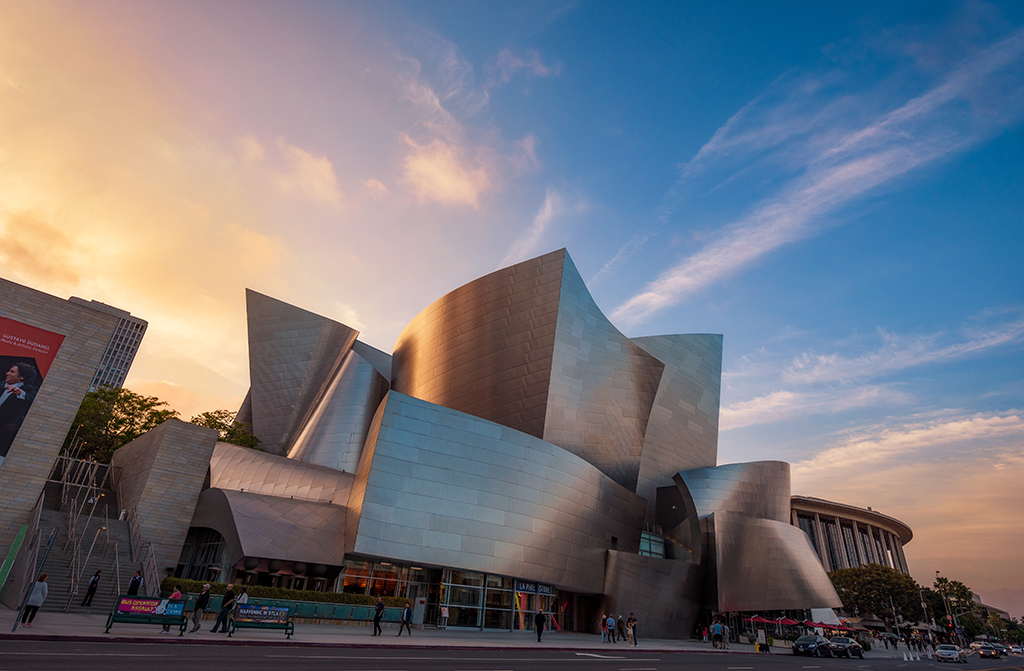 Courtesy: Travel Caffeine
Courtesy: Travel Caffeine
Completed in 2003, Walt Disney Concert Hall’s metallic surface is an embodiment of Gehry’s characteristic style. It is an internationally acclaimed structure and regarded to be one of the most highly acoustically sophisticated in the world. Designed with a vision to provide impeccable acoustics in an intimate setting, the Walt Disney Concert Hall demonstrates the possibilities of newness and difference in architecture.
Dancing House, Prague
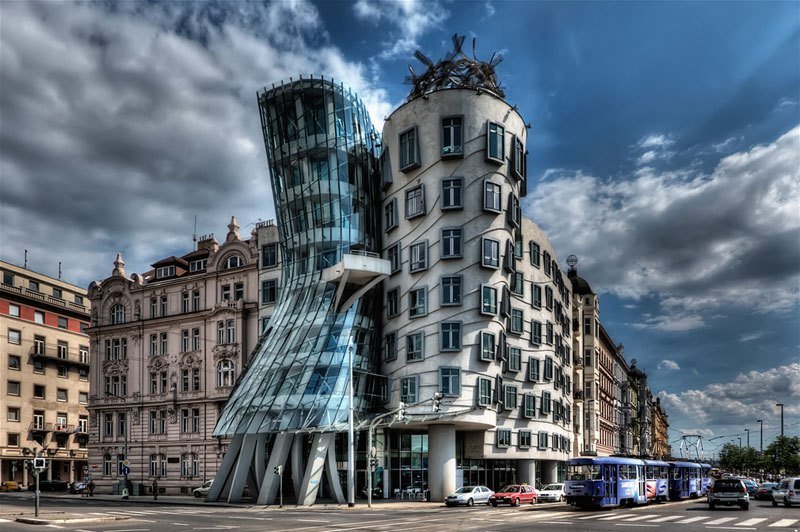 Courtesy: Foundation Design
Courtesy: Foundation Design
Opened in 1996, ‘Dancing House’ is the nickname for one of the most important architectural landmarks in Prague, i.e. the Nationale-Nederlanden building. It consists of nine floors and serves as a luxurious hotel presently. With a symbolic representation of a dancing duo in stone and glass respectively, one of its towers is topped with a crown-like structure and coated with an intricately enmeshed network of stainless steel.
Read more about this house here: World’s Bizarre Architecture: Frank Gehry’s Dancing House in Prague, Czech Republic
Olympic Fish Pavilion, Barcelona
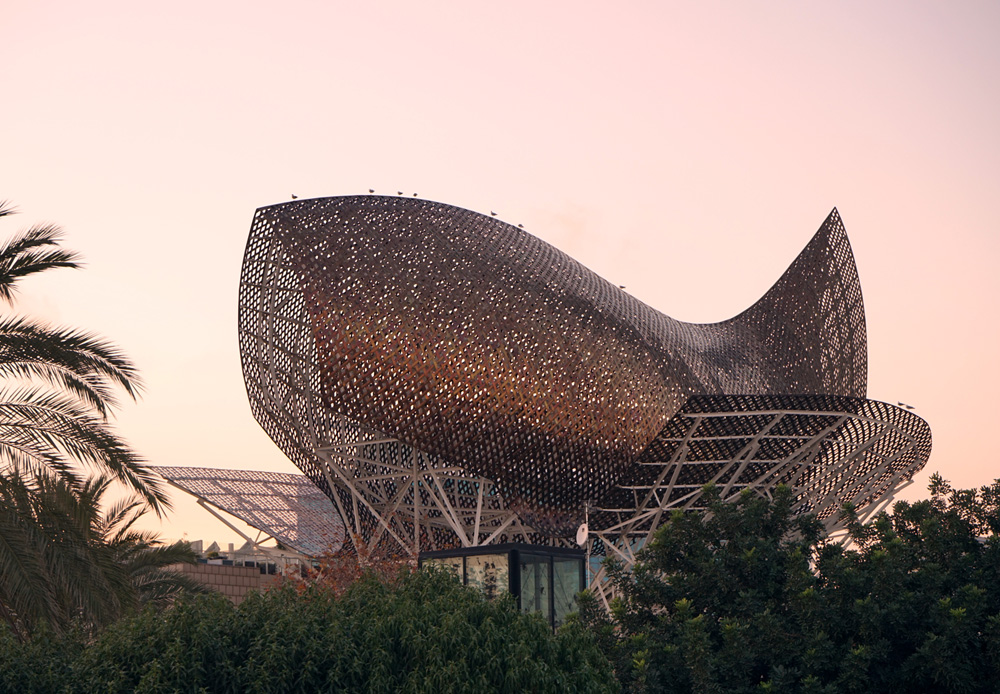 Courtesy: Culture Trip
Courtesy: Culture Trip
Constructed for the 1992 Barcelona Olympics, Frank Gehry’s Golden Fish Structure is 52m long and 35m high. It is made up of golden stainless steel that changes colour as per the weather conditions on any given day. The fish structure exudes a vibrant light and serves as a canopy to the restaurants, which link Hotel Arts to the nearby seafront. A monumental breakthrough, its architectural ingenuity is widely recognised.
New York by Gehry, New York City
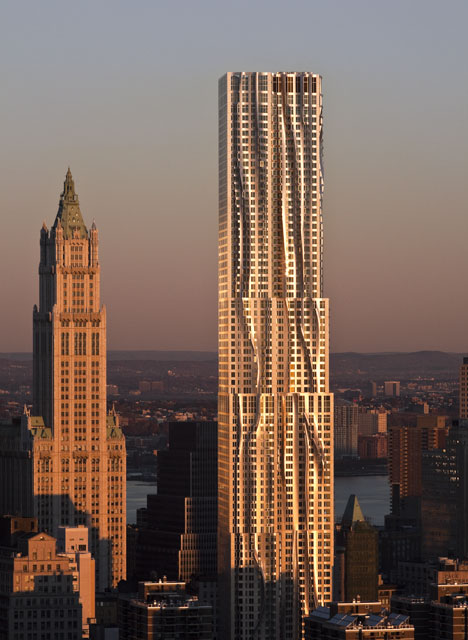 Courtesy: Dezeen
Courtesy: Dezeen
At 76 stories, New York by Gehry is one of the tallest residential towers in Manhattan’s Financial District. It contains 903 apartments and is an “undulating facade of billowing, rippling stainless steel.” It has mostly received favourable reviews from critics in the architectural industry and like other Gehry’s constructions, designed to provoke thought and challenge conventions associated with architectural styles and forms.
Marques de Riscal Hotel, Elciego
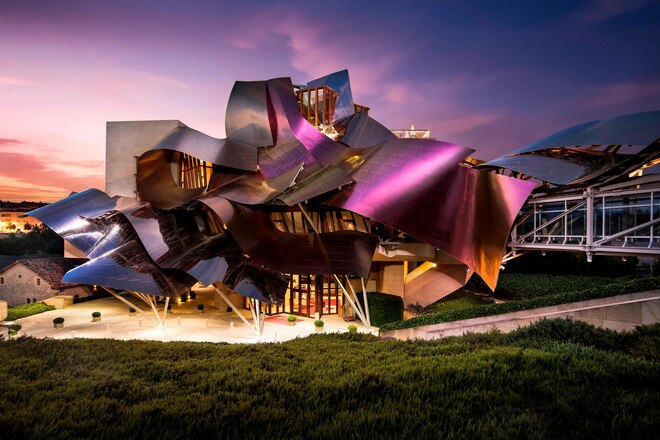 Courtesy: Marriott
Courtesy: Marriott
Opened in 2006, Marques de Riscal Hotel in Elciego was designed to promote the winery and wine industry. Gehry, therefore, had used titanium-hued panels to represent the burgundy tone of Rioja. Additionally, he had opted for colours like gold and silver for a symbolic representation of the wine bottles. The hotel is luxurious, and in accordance with its architectural spirit, offers spas based on “wine therapies.”
Lou Ruvo Centre for Brain Health, Cleveland
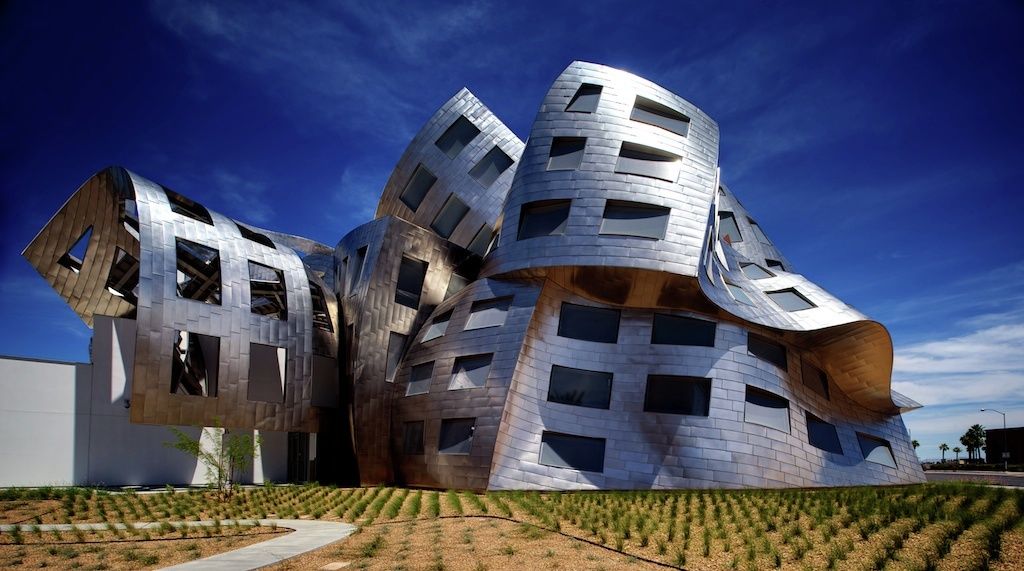 Courtesy: Arch20
Courtesy: Arch20
Constructed in a 60,000-square-foot complex, Gehry’s Lou Ruvo Centre is made up of two different buildings that are joined together by a steel trellis. Its structure is voluminous and located behind an orthogonal working space that acts as a research centre, clinic, and headquarters for Larry Ruvo’s non-profit foundation, namely Keep Memory Alive. The Centre is one of Gehry’s most inspiring works and equipped with areas designated for medical consultation, research, auditorium, and Museum of Mind separately.
Louis Vuitton Foundation, Paris
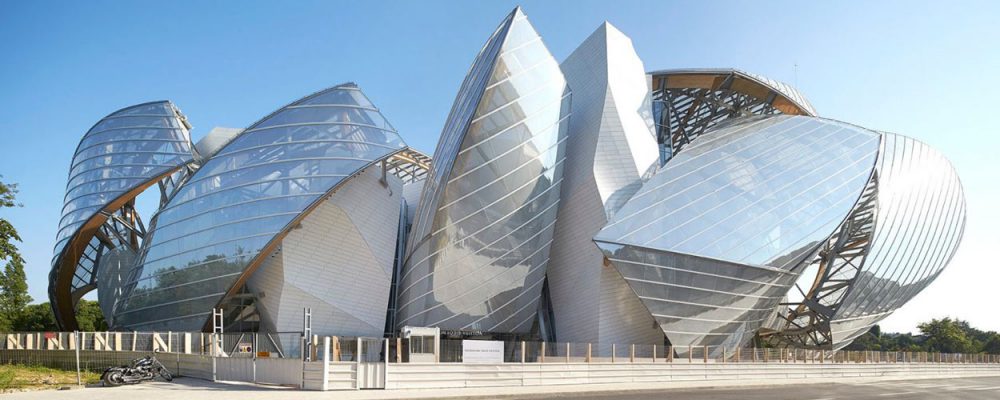 Courtesy: Enfnts Terribles
Courtesy: Enfnts Terribles
Started in 2006, the Louis Vuitton Foundation is both a cultural centre and an art museum. Its design evokes the nineteenth century’s glass garden building tradition, which seeks to serve as a cultural attraction for the visitors. Built on the borders of the water garden, the Foundation’s building is supported by wooden beams and contains a network of white blocks that are made up of fibre-reinforced concrete.
Museum of Pop Culture, Seattle, Washington
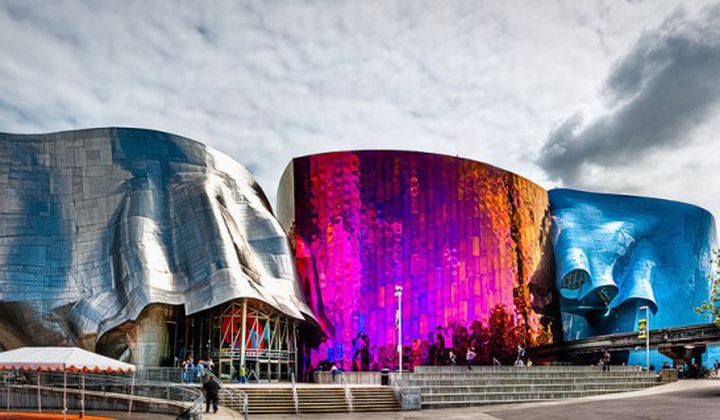 Courtesy: Smithsonian Magazine
Courtesy: Smithsonian Magazine
Known as “the Blob” in local parlance, Frank Gehry’s Museum of Pop Culture is a 140,00-square-foot building made out of a shimmering metal sheet. It resembles the shape of a disintegrated electric guitar and serves as a meeting point for arts like music and science fiction, among other things. With a vision for “curating, exploring, and supporting the creative works”, the Museum was opened in 2010.
Weisman Art Museum, Minneapolis
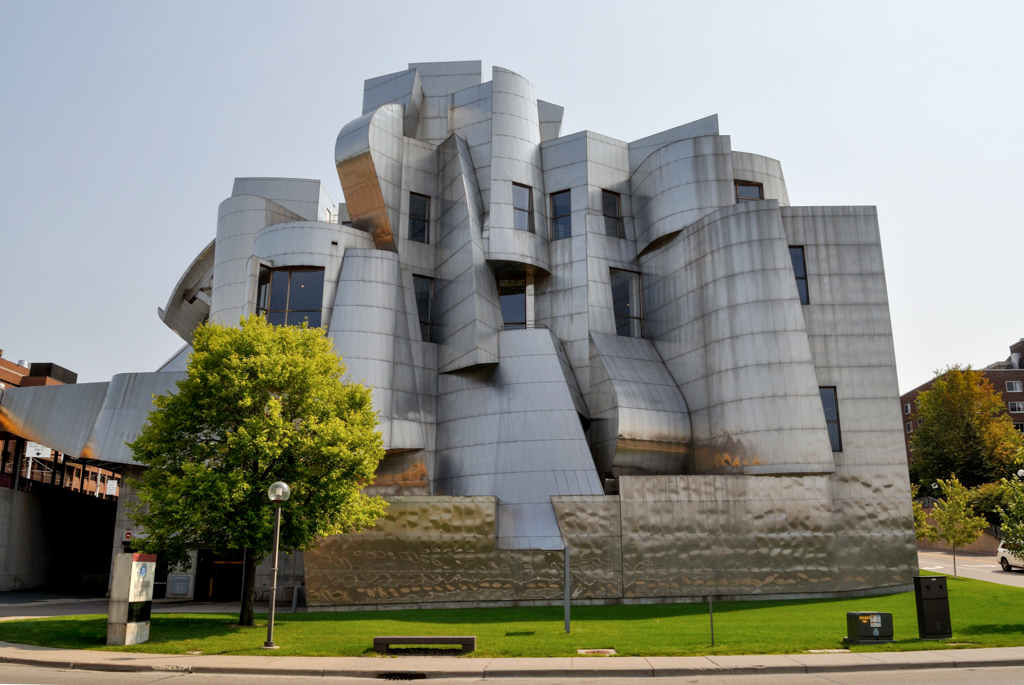 Courtesy: Sah Archipedia
Courtesy: Sah Archipedia
Located at the University of Minnesota campus, Weisman Art Museum was completed in 1993. Originally, it featured steel-clad turrets and skylit galleries that stood atop a garage. But Gehry, in partnership with HGA, extended it into three directions. The building’s facade overlooks the Mississippi River and is reminiscent of the Cubist movement of the earlier decades. In essence, his renovation demonstrated the fluid possibility of stainless steel.
Keep reading SURFACES REPORTER for more articles and stories.
Join us in SOCIAL MEDIA to stay updated
SR FACEBOOK | SR LINKEDIN | SR INSTAGRAM | SR YOUTUBE | SR TWITTER
Further, Subscribe to our magazine | Sign Up for the FREE Surfaces Reporter Magazine Newsletter
You may also like to read about:
Architect Christopher Charles Benninger
SR Wishes Ar Christopher Charles Benninger a very Happy Birthday | Know the Amazing Women who influenced his Life and Career
and more...